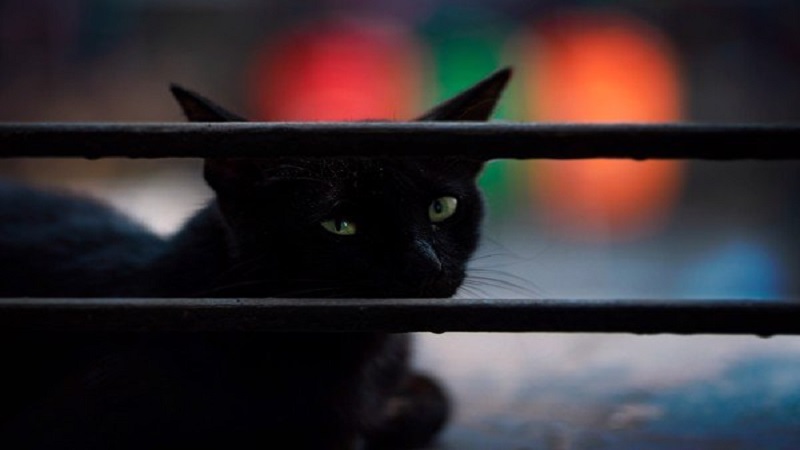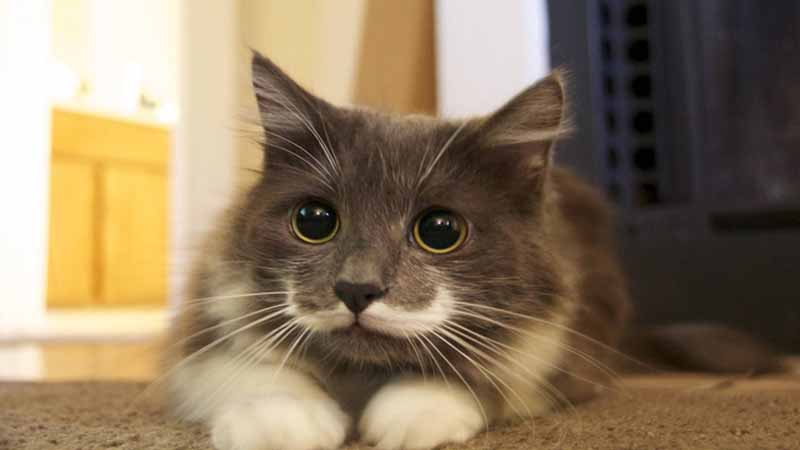Unlike other animals, a cat’s whiskers are an essential feature that helps them navigate, sense their surroundings, and detect potential dangers. Removing their whiskers is akin to taking away their sight. Let’s explore the reasons why trimming a cat’s whiskers is not recommended.
1 What is the Purpose of a Cat’s Whiskers?
According to How Stuff Works, cat whiskers are actually long, thin tactile hairs that grow on their faces and connect to their nervous system. These hairs are not limited to the areas around their mouths but also extend to the jaw, near the eyes, and even the back of their front legs, making them incredibly agile hunters.
Cats typically have 24 whiskers, evenly distributed with 12 on each side, which help them accurately perceive their environment. As a result, cat whiskers serve the following functions:
Aid in Navigation in the Dark
 Helping cats navigate in the dark
Helping cats navigate in the dark
A cat’s whiskers contain hundreds of highly sensitive nerve endings, acting as flexible sensory organs. This enables them to detect the movement of objects hundreds of meters away and determine the location of objects, even in complete darkness. This is why your pet cat can roam freely at night without bumping into things.
Assist in Positioning
The follicles, or the pockets that hold the whiskers, are located deep within the cat’s skin and are packed with nerve endings. These nerve endings send rapid signals to the brain for processing. During the day, whiskers act like a GPS, aiding in route planning, sensing wind direction when the pupil is constricted, and even measuring the speed of their prey when their eyes are closed.
Additionally, the length of a cat’s whiskers is nearly equal to the width of its body, providing a handy measurement for the cat to calculate if it can fit through a space.
 Whiskers help cats with orientation when their pupils are constricted
Whiskers help cats with orientation when their pupils are constricted
Express Emotions
A cat’s whiskers are the most prominent feature for understanding their emotional state:
- When a cat’s whiskers point forward, it indicates curiosity, hunting mode, alertness, or excitement.
- Whiskers pointing to the sides suggest a relaxed and calm state.
- If the whiskers are pulled back toward the cheeks, it means the cat is fearful or sad.
2 Why Shouldn’t You Cut a Cat’s Whiskers?
 Why you shouldn’t cut a cat’s whiskers
Why you shouldn’t cut a cat’s whiskers
Many people, especially children, may find trimming a cat’s whiskers amusing or believe it makes the cat look neater. However, this practice is not advisable. While whiskers will regrow within 2-3 months, it will cause significant discomfort and challenges for the cat in the meantime.
Without their whiskers, cats effectively become “blind,” struggling to determine their position and direction. They are more likely to get stuck, bump into objects when moving around at night, and lose their hunting abilities.
Additionally, cats cannot naturally express their emotions when the cluster of tactile hairs on their faces is removed. As a result, they may become less inclined to eat, more reclusive, and sleep more than usual.
3 What Harm Can Cutting a Cat’s Whiskers Cause?
 What harm can cutting a cat’s whiskers cause?
What harm can cutting a cat’s whiskers cause?
A real-life example illustrates the dangers of trimming a cat’s whiskers. A British Shorthair kitten climbed onto a beam to catch a mouse but unfortunately got stuck. However, as its whiskers had been cut, it couldn’t calculate the distance or direction to jump down, leading to its tragic demise, trapped on the beam.
The importance of a cat’s whiskers cannot be overstated, as they provide invaluable assistance in their daily lives. The consequences of a cat losing its whiskers are unpredictable and potentially severe. Therefore, it is essential to educate children about treating pets with respect and understanding that trimming a cat’s whiskers is an uninformed practice. While cats may naturally shed their whiskers, they should never be deliberately cut, just as we wouldn’t want to be “blinded” ourselves.
In conclusion, we hope that this article has provided you with valuable insights into why trimming a cat’s whiskers is not recommended and has empowered you to care for your furry friend in the best possible way.






























